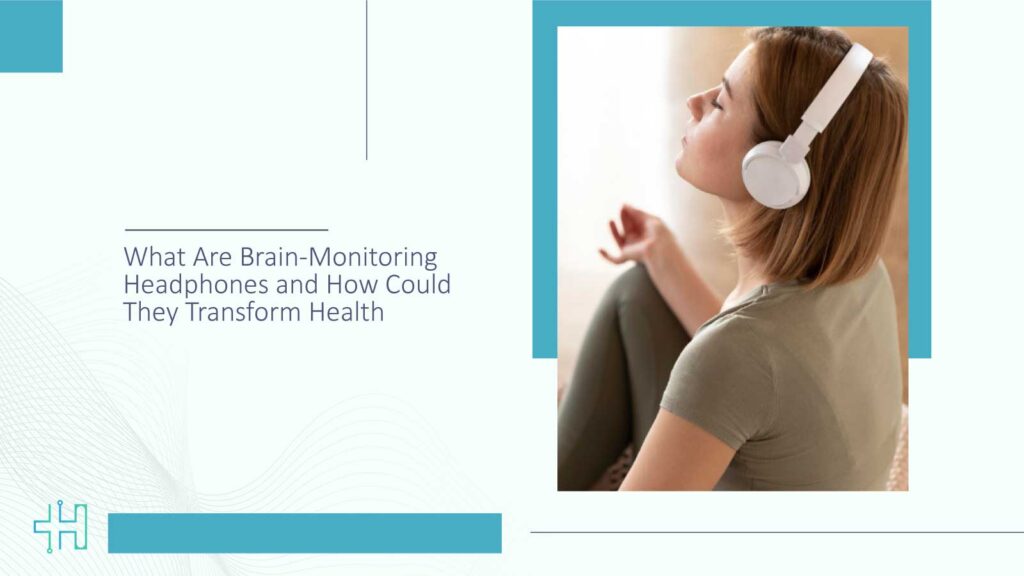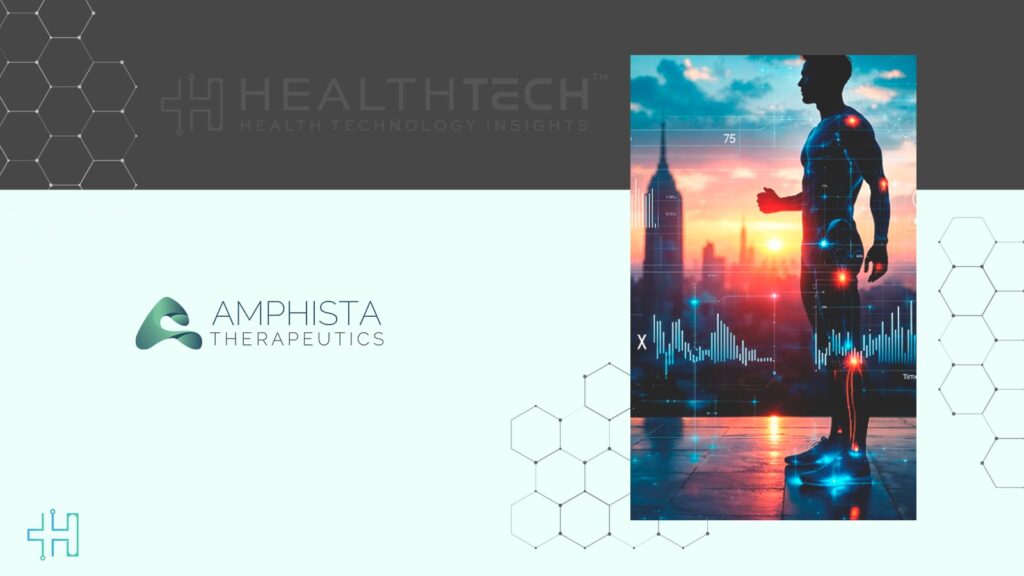Wearable health technology has come a long way from step counters and heart-rate monitors. The next frontier, however, is brain-monitoring headphones. Unlike most wearables, the headphones are meant to track and analyze neural activity in real time, and could revolutionize the way healthcare professionals monitor, diagnose, and treat brain disorders.
With the American medical profession shifting toward more preventive treatment and early intervention, brain-function-monitoring devices with real-time feedback are in the running. Brain-monitoring headphones strike a balance between comfort and mobility and high-end neurotech and are thus desirable for both occupational and recreational use.
What Are Brain-Monitoring Headphones?
Brain-monitoring headphones are earpieces that incorporate electroencephalography (EEG) or similar neural-sensing technology within a headphone form. They can detect brainwave activity and function as regular headphones for listening to sound.
In contrast to the EEG caps in hospitals, the brain-monitoring headphones can be portable and convenient. The headphones will usually feature internal electrodes arranged to capture electrical signals from the brain and transmit this information to an attached device or cloud server for processing.
The idea is to make neuro-monitoring ubiquitous, whether applied to continuous medical care, employee wellness programs, or personal health monitoring. Even some newer models offer real-time feedback, assisting users in modifying their state of mind via guided breathing, meditation, or mental exercises.
How They Work: Technology Behind the Device
Underlying brain-monitoring headphones is electroencephalography (EEG), a non-invasive method of recording the electrical activity of the brain with electrodes on the scalp. EEG in conventional clinical application involves a bulky cap, gels, and an immovable installation. Brain-monitoring headphones miniaturize this and integrate these electrodes into an ergonomically designed headset, which can be utilized discreetly and in movement.
Most models employ dry or semi-dry electrodes that don’t use conductive gel, offering more comfort and convenience. The electrodes detect the brain’s neural signals, usually in a set of frequency bands like alpha, beta, delta, and theta waves. These brainwave patterns are beset by different states of mind – for instance, greater beta activity may denote tension or concentration, while an increase in alpha waves may denote relaxation.
Gathered data is delivered to a computing device – usually through Bluetooth or an encrypted Wi-Fi link – where noise is removed by algorithms and patterns are deciphered. Some use machine learning algorithms that have been trained on large databases to identify anomalies, monitor changes, and create personalized insights.
For healthcare integration, these headphones will connect straight into electronic health record (EHR) systems or clinician dashboards for real-time tracking. More advanced models will also offer neurofeedback, providing patients with gentle audio or visual signals to help them learn to control their brain activity on their own.
This EEG sensing, AI-powered analytics, and wireless connectivity combination equals a potent, transportable neuro-monitoring device – one that scales consumer convenience with medical-grade capability.
Potential Clinical Applications in Healthcare
Head-tracking headphones are on the cusp of shifting from specialty technology gadgets to incorporated clinical tools, particularly during the era of value-based care. They are very light and easy to use, making them appropriate for many healthcare environments, ranging from acute monitoring to chronic long-term disease management.
1. Neurological Assessments
Doctors can utilize these devices to get baseline EEG scans during regular check-ups. This can detect aberrant brainwave function related to conditions like epilepsy, mild cognitive impairment, or incipient Alzheimer’s disease. Doctors would not need to wait until symptoms worsen before treating with preventive measures.
2. Rehabilitation after Stroke
Stroke patients also need continuous neurological monitoring to monitor recovery. Brain-monitoring headphones can be used during physical or cognitive therapy treatment, taking feedback data that guides therapists to make in-flight adjustments to rehabilitation protocols. That feedback loop in real-time can improve outcomes and decrease hospital readmissions.
3. Concussion and Traumatic Brain Injury (TBI) Follow-Up
Competitive sportsmen, soldiers, and crash survivors can be helped with home brain monitoring as part of the rehabilitation. Clinicians would be able to monitor more precisely the time for return to normal life and avoid long-term complications with the recording of alterations in brainwave patterns.
4. Sleep and Mental Health Clinics
For insomnia, depression, and anxiety disorder patients, brain-monitoring headphones are capable of monitoring sleep stages and tracking how treatments for mental illnesses affect the neural activity over time. Psychiatrists would then be in a position to adjust drug doses or therapy methods according to measurable readings instead of solely relying on subjective complaints.
Impact on Mental Health Monitoring
Psychiatric treatment is generally based on patient description, observer report, and standardized forms. Useful as these are, they might not recognize subtle alterations in brain functioning that occur before frank symptoms become apparent. Brain-monitoring headphones can potentially bridge the gap by providing objective, real-time data to guide diagnosis and treatment.
1. Early Detection of Mood Disorders
Brainwave pattern changes can take place before a patient becomes aware of symptoms of depression, anxiety, or bipolar disorder. Ongoing monitoring may flag clinicians to subtle signs, triggering early intervention and involvement. In at-risk groups like those with histories of illness within their families, this could be a lifesaver.
2. Monitoring Treatment Effectiveness
Psychiatrists might employ neural information to decide whether antidepressants, mood stabilizers, or therapy are having tangible impacts on brain functioning. Practitioners might alter the strategy without expecting a complete symptomatic reversal if a patient’s brain wave activity fails to change even after many weeks of treatment.
3. Minimizing Crisis Episodes
In behavioral health care, live monitoring would alert to abnormal neural patterns that are correlated with agitation, intense anxiety, or suicidal thoughts. Combined with an alarm system, this would allow for instant interventions, which might avert psychiatric emergencies.
4. Enabling Telepsychiatry
With telemedicine expanding mental health care, the combination of brain-monitoring headphones and telehealth software could provide far-off practitioners with the same physiological data they’d receive in person – making diagnosis more accurate and treatment more customized.
With the integration of subjective patient scores and objective brain tests, clinicians would be better suited to approach a precision-based, data-driven model of psychiatry for both enhanced patient and clinician confidence.
Role in Neurological Disorder Treatment
Brain-monitoring headphones would greatly facilitate real-time treatment of neurological disorders through continuous monitoring of real-world brain function outside the clinic. This can enhance patient safety, individualized therapy, and long-term patient outcomes.
1. Epilepsy Monitoring
In clinic patients with epilepsy, recording seizure activity between appointments is usually not feasible. Headphones for monitoring the brain can pick up pre-seizure shifts in brainwaves, sending early alerts and enabling patients or their families to begin preventive treatment. The information could also enable neurologists to better fine-tune medication regimes depending on the frequency and severity of the atypical brain activity patterns.
2. Parkinson’s Disease and Motor Disorders
Parkinson’s patients have variations in motor capability that could be related to certain neural patterns. Ongoing monitoring might enable doctors to realize how medication timing, exercise, and stress affect brain activity. In the future, this information could enable doctors to dose and time better.
3. Alzheimer’s Disease and Cognitive Decline
Early-onset Alzheimer’s may prove challenging to diagnose until certain cognitive deficit symptoms become apparent. Insignificant shifts in brainwave patterns can be detected months or years prior to actual functional impairment appearing. Monitoring headphones could possibly be used in screening high-risk subjects, with earlier intervention postponing progression.
4. Multiple Sclerosis (MS) Fatigue and Cognitive Symptoms
MS patients also usually present with brain fog and fatigue symptoms. Ongoing brainwave monitoring might allow neurologists to know when these symptoms tend to most commonly occur and triggers, in order that lifestyle modifications or medication adjustments can enhance quality of life.
With neurological monitoring brought out of the clinic and into the home and everyday life of patients, medical teams may gain insights never before accessible, without the need of having to be stuck in clinics doing EEG sessions all day long.
Benefits for Cognitive Function and Rehabilitation
Although most of the information about brain-monitoring headphones is about disease diagnosis and treatment, their uses also extend to cognitive enhancement and rehabilitation – fields in which clinicians and occupational health professionals alike can see high returns.
1. Stroke Recovery and Neuroplasticity
Stroke rehabilitation is frequently based on encouraging neuroplasticity – the brain’s capacity to rewire and create new neural networks. Brain-monitoring headsets are able to monitor a patient’s responses to brainwaves from physical and occupational therapy, and therefore, therapists can be aware of which exercises best induce improvement. Real-time neurofeedback can stimulate patients to participate more fully in therapy sessions and result in quicker improvement.
2. Traumatic Brain Injury (TBI) Rehabilitation
For TBI patients, cognitive functions like memory, attention, and problem-solving can recover in years or months. Real-time monitoring can inform rehabilitation strategies by demonstrating what tasks or environmental stimuli induce positive neural responses. Through this data-driven approach, care professionals can design personal rehab plans rather than relying on trial-and-error approaches.
3. Cognitive Training for Aging Populations
Healthy older people and those with mild cognitive impairment might employ brain-monitoring headphones in combination with brain-training software to assess gains in processing speed, working memory, or attention. Therapists can then determine whether treatments like these truly enhance brain function instead of depending upon self-assessments.
4. Optimization of Performance in High-Stress Professions
Medical professionals, pilots, and other high-skilled professionals may find wearing these devices helpful to track mental fatigue, attention lapses, and stress patterns. This could be utilized to guide scheduling, workload assignments, and wellness initiatives – increasing safety and performance in high-risk work.
By combining clinical rehabilitation with active performance monitoring, brain-monitoring headphones could redefine “measuring brain health” from fighting disease to optimizing daily thinking function.
FAQs
1. How precise are brain-monitoring headphones versus hospital-based EEG equipment?
Though consumer electronics have advanced well, most brain-monitoring headphones do not yet equate to hospital-grade EEG equipment. That is not to suggest that some of the medical-grade models are not making their way through FDA approval and are being extremely effective at identifying certain patterns of brainwaves.
2. Do brain-monitoring headphones pick up on neurological disorders early?
Yes, in some cases. Mild fluctuations in brainwaves in epilepsy, mild cognitive impairment, or mood disorders could be detectable before any obvious symptoms arise. Early detection depends on the quality of the device and the interpreting algorithms.
3. Are the devices safe for daily use?
Actually. EEG devices are not invasive and measure electrical activity in an inactive way – they don’t produce harmful signals. They can be worn without harm daily, even for extended periods.
4. What ensures the confidentiality of the patient’s data when brain-monitoring headphones are utilized?
HIPAA-compliant ones employ encryption, secure cloud storage, and limited access. Healthcare professionals need to ensure informed consent and that the patients are aware of who will see their medical information.
5. Can brain-monitoring headsets be part of telehealth platforms?
Indeed, possibly the most exciting application is remote patient monitoring. Integration with telehealth platforms enables clinicians to monitor real-time brain activity in conjunction with video visits, enhancing the quality of care for far-flung or under-resourced patients.
Dive deeper into the future of healthcare – Keep reading on Health Technology Insights.
To participate in our interviews, please write to our HealthTech Media Room at sudipto@intentamplify.com








